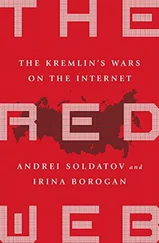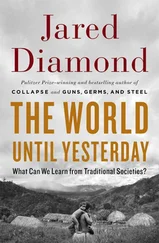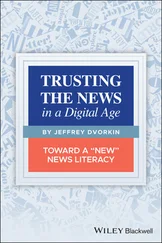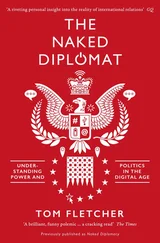Jared Cohen - The New Digital Age
Здесь есть возможность читать онлайн «Jared Cohen - The New Digital Age» весь текст электронной книги совершенно бесплатно (целиком полную версию без сокращений). В некоторых случаях можно слушать аудио, скачать через торрент в формате fb2 и присутствует краткое содержание. Жанр: Старинная литература, на английском языке. Описание произведения, (предисловие) а так же отзывы посетителей доступны на портале библиотеки ЛибКат.
- Название:The New Digital Age
- Автор:
- Жанр:
- Год:неизвестен
- ISBN:нет данных
- Рейтинг книги:5 / 5. Голосов: 1
-
Избранное:Добавить в избранное
- Отзывы:
-
Ваша оценка:
- 100
- 1
- 2
- 3
- 4
- 5
The New Digital Age: краткое содержание, описание и аннотация
Предлагаем к чтению аннотацию, описание, краткое содержание или предисловие (зависит от того, что написал сам автор книги «The New Digital Age»). Если вы не нашли необходимую информацию о книге — напишите в комментариях, мы постараемся отыскать её.
The New Digital Age — читать онлайн бесплатно полную книгу (весь текст) целиком
Ниже представлен текст книги, разбитый по страницам. Система сохранения места последней прочитанной страницы, позволяет с удобством читать онлайн бесплатно книгу «The New Digital Age», без необходимости каждый раз заново искать на чём Вы остановились. Поставьте закладку, и сможете в любой момент перейти на страницу, на которой закончили чтение.
Интервал:
Закладка:
Those with state resources will have the upper hand in any marketing war, but never the exclusive advantage. Even if the state controls many of the means of production—the cell towers, the state media, the ISPs—it will be impossible for any party to have a complete information monopoly. When all it takes to shoot, edit, upload and disseminate user-generated content is a palm-sized phone, a regime can’t totally dominate. One video captured by a shaky mobile-phone camera during the postelection protests in Iran in 2009 galvanized the opposition movement: the famous “Neda video.” Neda Agha-Soltan was a young woman living in Tehran who while parked on a quiet side of the street at an antigovernment protest stepped out of her car to escape the heat and was shot in the heart by a government sniper from a nearby rooftop. Amazingly, the entire incident was caught on someone’s mobile phone. While members of the crowd attempted to revive Neda, others began filming her on their phones as well. The videos were passed between Iranians, mostly through the peer-to-peer platform Bluetooth, since the regime had blocked mobile communications in anticipation of the protests; they found their way online and went viral. Around the world, observers were galvanized to speak out against the Iranian regime while protesters in Iran marched, calling for justice for Neda. All of this significantly ratcheted up the global attention paid to a protest movement the regime was desperately trying to stop.
Even in the most restrictive societies, places where spyware and virtual harassment and pre-compromised mobile phones are rampant, some determined individuals will find a way to get their messages out. It might involve smuggling SIM cards, rigging mesh networks (essentially, a wireless collective in which all devices act like routers, creating multiple nodes for data traffic instead of a central hub) or distributing “invisible” phones that are designed to record no communications (perhaps by allowing all calls to be voice over IP) and that allow anonymous use of Internet services. All state efforts to curtail the spread of an in-demand technology fail; it’s merely a question of when. (This is true even for the persecuted minorities whose government tries to exclude them from the Internet.) Long before the Neda video, Iran tried to ban satellite-television dishes; their mandate was met with an increase in satellite adoption among the Iranian public. Today, the illegal satellite market in Iran is among the largest per capita in the world and even some members of the regime profit from black market sales.
The 1994 Rwandan genocide, a high-profile conflict from the pre-digital age that claimed the lives of 800,000 people, demonstrates what a difference proportionate marketing power makes. In 1994, while Hutus, Tutsis and Twa all owned radios, only Hutus owned radio stations. With no means of amplifying their voices, Tutsis were powerless against the barrage of propaganda and hate speech building on the airwaves. When Tutsis tried to operate their own radio station, the Hutu-dominated government identified these operators, raided their offices and made arrests. If the minority Tutsi population in the years leading up to the 1994 genocide had had the powerful mobile devices we have today, perhaps a narrative of doubt could have been injected into Rwandan public discourse, so that some ordinary Hutu civilians would not have found the anti-Tutsi propaganda sufficiently compelling to lead them to take up arms against their fellow Rwandans. The Tutsis would have been able to broadcast their own content from handsets, while on the move, without having to rely on government approval or intermediaries to develop and disseminate content. During the genocide, the Hutu radio stations announced names and addresses of people who were hiding—one can only imagine what a difference an alternative communications channel, like encrypted peer-to-peer messaging, might have made.
Despite potential gains, there will be longer-term consequences to this new level playing field, though we cannot predict what will be lost when traditional barriers are removed. Misinformation, as mentioned above, will distract and distort, leading all actors to misinterpret events or miscalculate their response. Not every brutal crime committed is part of a systematic slaughter of an ethnic or religious group, yet it can be incorrectly cast as such with minimal effort. Even in domestic settings, misinformation can present a major problem: How should a local government handle an angry mob at city hall demanding justice for a manipulated video? Governments and authorities will face questions like these repeatedly, and only some of the answers they give will be pacifying.
The best and perhaps only reply to these challenges is digital verification. Proving that a photo has been doctored (by checking the digital watermark), or that a video has been selectively edited (by crowd-sourcing the whole clip to prove parts are missing), or that a person shown to be dead is in fact alive (by tracking his online identity) will bring some veracity in a hyper-connected conflict. In the future, a witness to a militia attack in South Sudan will be able to add things like digital watermarks, biometric data and satellite positioning coordinates to add heft to his claims, useful for when he shares the content with police or the media. Digital verification is the next obvious stage of the process. It already occurs when journalists and government officials cross-check their sources with other forms of information. It will be even easier and more reliable when computers do most of the work.
Teams of international verification monitors could be created, dispatched to conflicts where there is a significant dispute about the digital narratives emerging. Like the Red Cross, verification monitors would be seen as neutral agents, in this case highly capable ones technically. 3(They need not be deployed to the actual conflict zone in every case—their work could sometimes be done over an Internet connection. But in conflicts where communications infrastructure is limited or overwhelmingly controlled by one side, proximity to the actors would be necessary, as would language skills and cultural knowledge.) Their stamp of approval would be a valuable commodity, a green light for media and other observers to take given content seriously. A state or warring party could bypass these monitors, but doing so would devalue whatever content was produced and make it highly suspect to others.
The monitors would examine the data, not the deed, so their conclusions would be weighted heavily, and states might launch interventions, send aid or issue sanctions based on what they say. And, of course, with such trust and responsibility comes the inevitable capacity for abuse, since these monitors would be no less immune to the corruption that stymies other international organizations. Regimes might attempt to co-opt verification monitors, through bribes or blackmail, and some monitors might harbor personal biases that reveal themselves too late. Regardless, the bulk of these monitors would be comprised of honest engineers and journalists working together, and their presence in a conflict would lead to more safety and transparency for all parties.
When not engaged in marketing wars, groups in conflict will attack whatever online entities they deem valuable to the other side. This means targeting the websites, platforms and communications infrastructure that have some strategic or symbolic importance with distributed denial of service (DDoS) attacks, sophisticated viruses and all other types of cyber warfare. Online attacks will become an integral part of the tactical strategy for groups in conflict, from the lowest intensity fight to full-fledged warfare. Attacking or incapacitating a rival group’s communications network will not only interfere with its digital marketing abilities but will also affect its access to resources, information and its support base. Once a network or database has been successfully compromised, the infiltrating group can use the information they gathered to stay informed, spread misinformation, launch preemptive attacks and even track high-value targets (if, for example, a group found the mobile number for regime officials and had monitoring software that revealed their locations).
Читать дальшеИнтервал:
Закладка:
Похожие книги на «The New Digital Age»
Представляем Вашему вниманию похожие книги на «The New Digital Age» списком для выбора. Мы отобрали схожую по названию и смыслу литературу в надежде предоставить читателям больше вариантов отыскать новые, интересные, ещё непрочитанные произведения.
Обсуждение, отзывы о книге «The New Digital Age» и просто собственные мнения читателей. Оставьте ваши комментарии, напишите, что Вы думаете о произведении, его смысле или главных героях. Укажите что конкретно понравилось, а что нет, и почему Вы так считаете.












